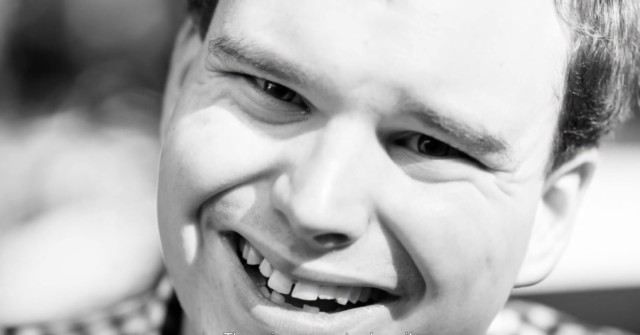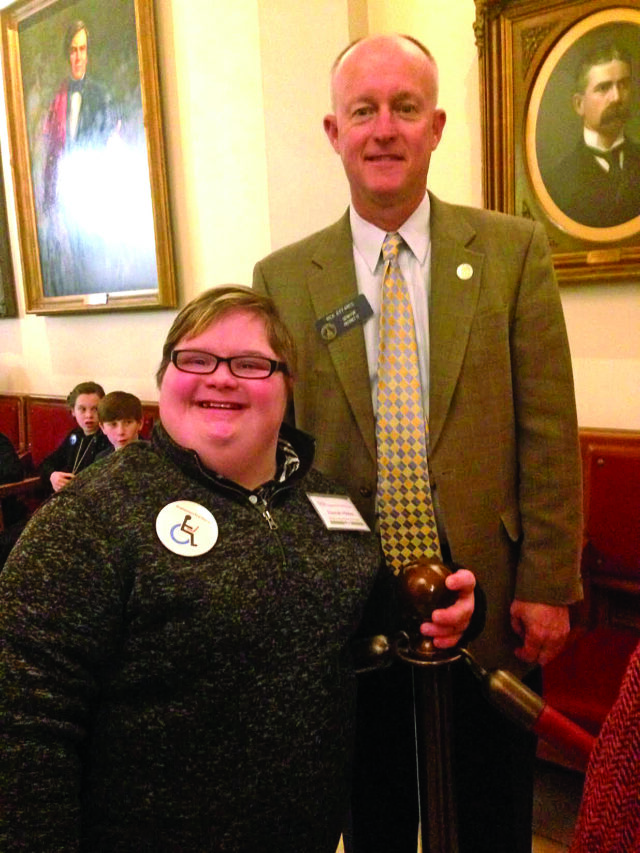Supported Decision-Making is a way for people with disabilities to have control over their lives. People of all ages, all races, all abilities and all socioeconomic levels get support when they are making decisions. Think about an important decision you recently made. Think about what it was about and who you talked to when you needed more information or just wanted to bounce around alternatives. The idea of Supported Decision-Making for people with disabilities is to formalize that same process.

The most important aspect of Supported Decision-Making is that the person with a disability decides the areas and types of help they need. Decisions are not made for them; they are made by them.
Supported Decision-Making enables a person with a disability to make their own decisions with assistance from a network of supporters. Supporters can help people understand information, issues and choices. They can help focus attention and weigh options. They can help interpret and communicate decisions to others.
To be successful, a supporter must be person-centered. Supporters should understand how the person learns and communicates. They should also understand their role in finding, sharing, and helping the person process meaningful information. And they should be chosen by the person being supported, and they should know them well.
There are many reasons to use Supported Decision-Making. It is a process that helps people with disabilities achieve self-determination. People with greater self-determination are more independent, more integrated into their communities, healthier, and better able to recognize and resist abuse. Supported Decision-Making plans can be used in place of guardianship. Georgia law says guardianship should be a last resort, but it is often not. People who do not have a guardian are more likely to have a job, live independently, have friends other than staff or family, go on dates, socialize in the community, and practice the religion of their choice.
In Georgia, we use the acronym DECIDE to describe or define the elements of Supported Decision-Making. It stands for, “Direct. Enlist. Choose. Inform. Determine. Experience.” To illustrate how this works, I want to share an important recent decision I made.
I have been involved in self-advocacy for years. My work has included both professional and volunteer elements, including professional presentations, a SARTAC fellowship, published articles, and lectures at conferences such as the National Guardianship Association and TASH. My volunteer work includes being part of the Uniting for Change leadership collective, expanding self-advocacy and voting rights, and working with students and youth groups on disability awareness.
But during the pandemic lockdown, I began getting sick. My brain seemed to be breaking down and my body was losing function. I was unable to perform most tasks. I won’t go into all the details, but my professional and volunteer work stopped.
My recovery has been very long and slow. The intense treatments are tapering, and I can now do and enjoy many of my former activities. Recently, I was presented with an opportunity to attend a disability leadership conference in Washington, D.C., and I had to decide if I was ready to go. I decided to consult with some supporters. I didn’t want it to beot my mom who I knew didn’t think I was ready. So, I thought about the context of my uncertainty. It was both professional and medical.
Professionally, my strongest support was my partner at the Georgia Advocacy Office, so I met with them to discuss the pros and cons of going. Medically, I relied on a team of doctors and consulted with them to weigh my decision. Everyone got on board with a support plan I thought could work, and with that plan in place, I decided to go.
Even though I had reservations initially, my supporters helped me consider all the variables and identify possible pitfalls to establish a support plan. My decisions aren’t always complex, but I often discuss what’s on my mind with family and other supporters when I feel like it will be helpful.
– John McCarty
_________________________

My journey into Supported Decision-Making began when I was awarded the NOW Medicaid Waiver in the summer of 2019. It allowed me to contract that next year with a community guide who led my team of supporters and me through the Person-Centered Planning (PCP) process. My family and I had been aware of the process for years but had not yet undertaken the training and framework.
My community guide was a highly-regarded advocate in the local disability community and my team was comprised of members I hand-picked: my mom, my older sister, and a friend who was next in line to be my primary supporter if my two family members were unable to continue doing so. I also chose my dearest aunt, who is a retired special education coordinator in our local public school district, my direct work supervisor, my former high school teacher who was also my group leader at church, and three of my paid support staff, who had been family friends for years (one of whom was my beloved tennis coach). I expect that most of these individuals will be involved in my life to some degree from now on.
The ten of us got busy over the next many months in 2020 and, as the pandemic wore on, we met regularly through video conferencing. We mapped out my vision for the rest of my life, both personally and professionally, which included driving a car, living independently, dating, being married and having children, and continuing to discover my future dream job.
The following year, my mom, sister, and I were introduced to Supported Decision-Making by leaders in the Georgia Advocacy Office and our long-time connection, the Georgia Council on Developmental Disabilities. Supported Decision-Making seemed to be a natural progression from PCP. Once again, we enlisted the services of our same community guide and team members and resumed our regular virtual meetings. We soon identified that my dreams were similar to my neurotypical peers, and many of those dreams were attainable with support. We further recognized that people of all abilities are not truly independent but rather interdependent on others, particularly when considering important life choices. Something as simple as buying a car is often a supported decision.
As we went from 2021 to 2022, I realized my goal was to get and maintain meaningful employment over the next four years, but I also acknowledged that specific jobs would likely come and go as I worked toward my dream job. We talked of dating, driving (even a golf cart in the neighborhood) and living away from my birth family. To that end, we researched and discovered several viable residential options including Better Living Together, Inspiritus, Microlife Institute and Two Sparrows Village.
As the reality of navigating adulthood continues, I recently joked to my mom, “I’d like to move out when I’m 50 (years old).” I’ll be 28 this summer.
Decision-making is a learned skill, and people with disabilities can learn to make their own decisions and make those decisions with support. Though situations and people will look different, supporters who presume competence in the person with a disability can help that person achieve independence. That is the goal of Supported Decision-Making.
– Hannah Hibben
For more information, please go to idecidega.org.
